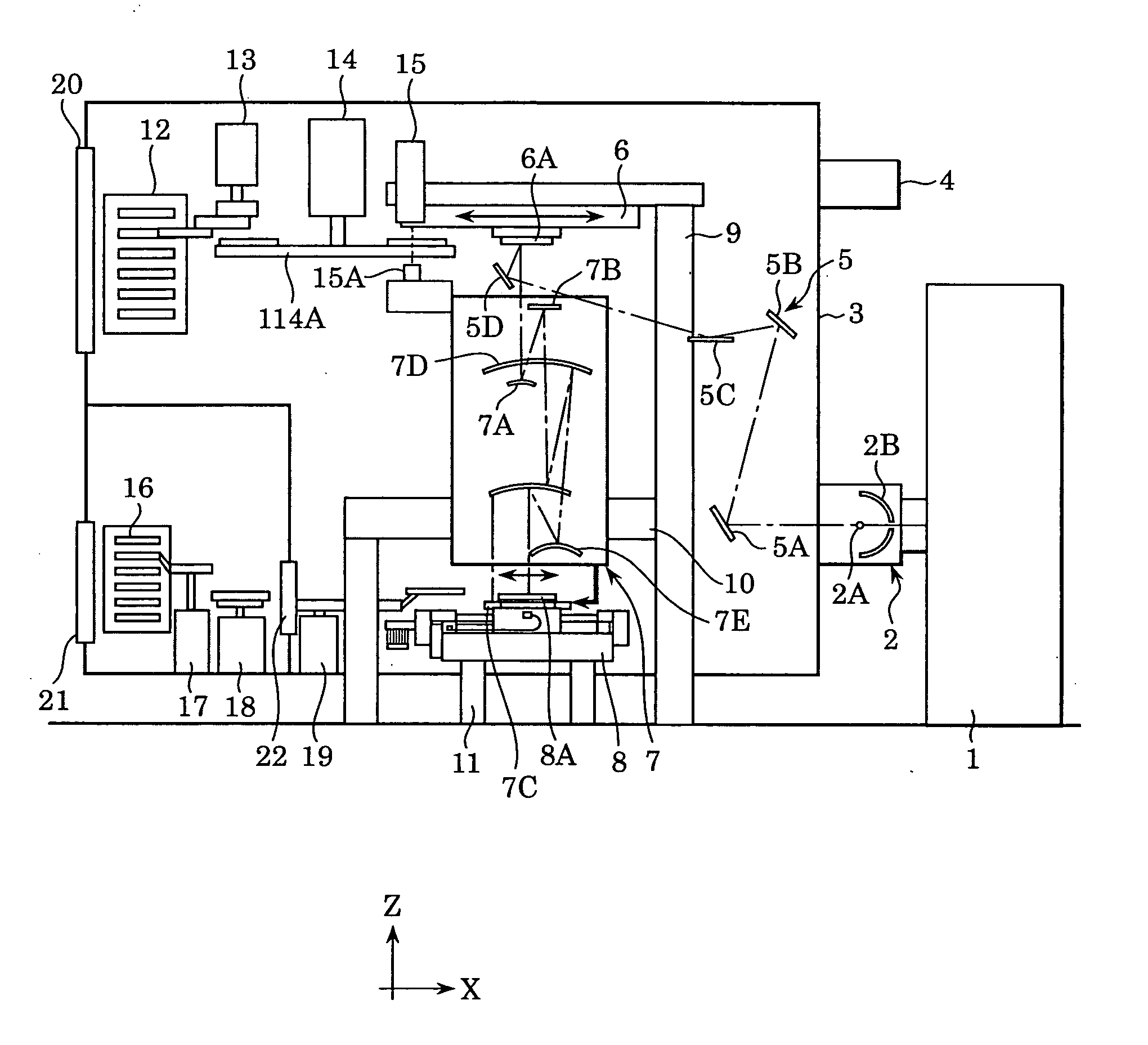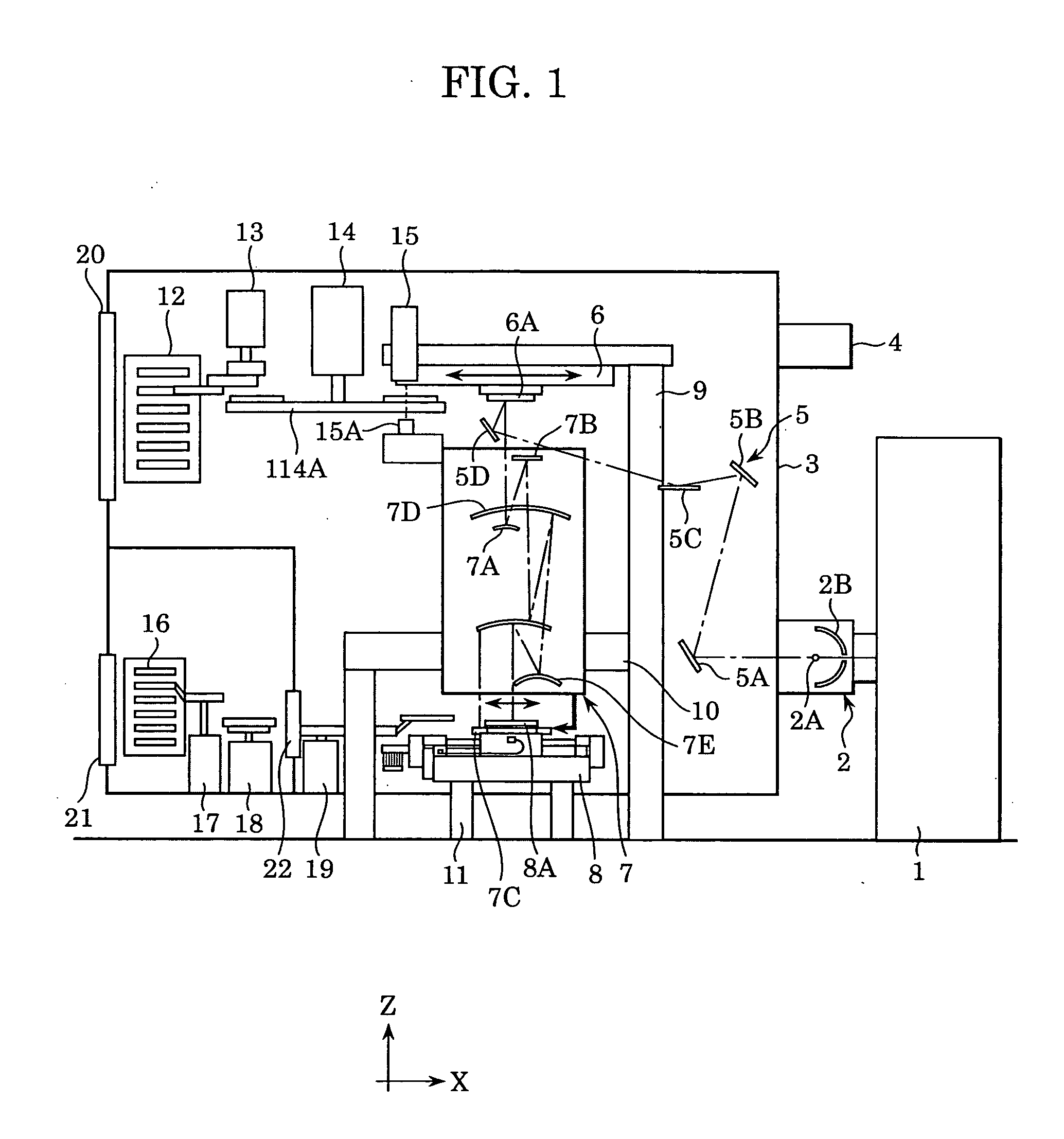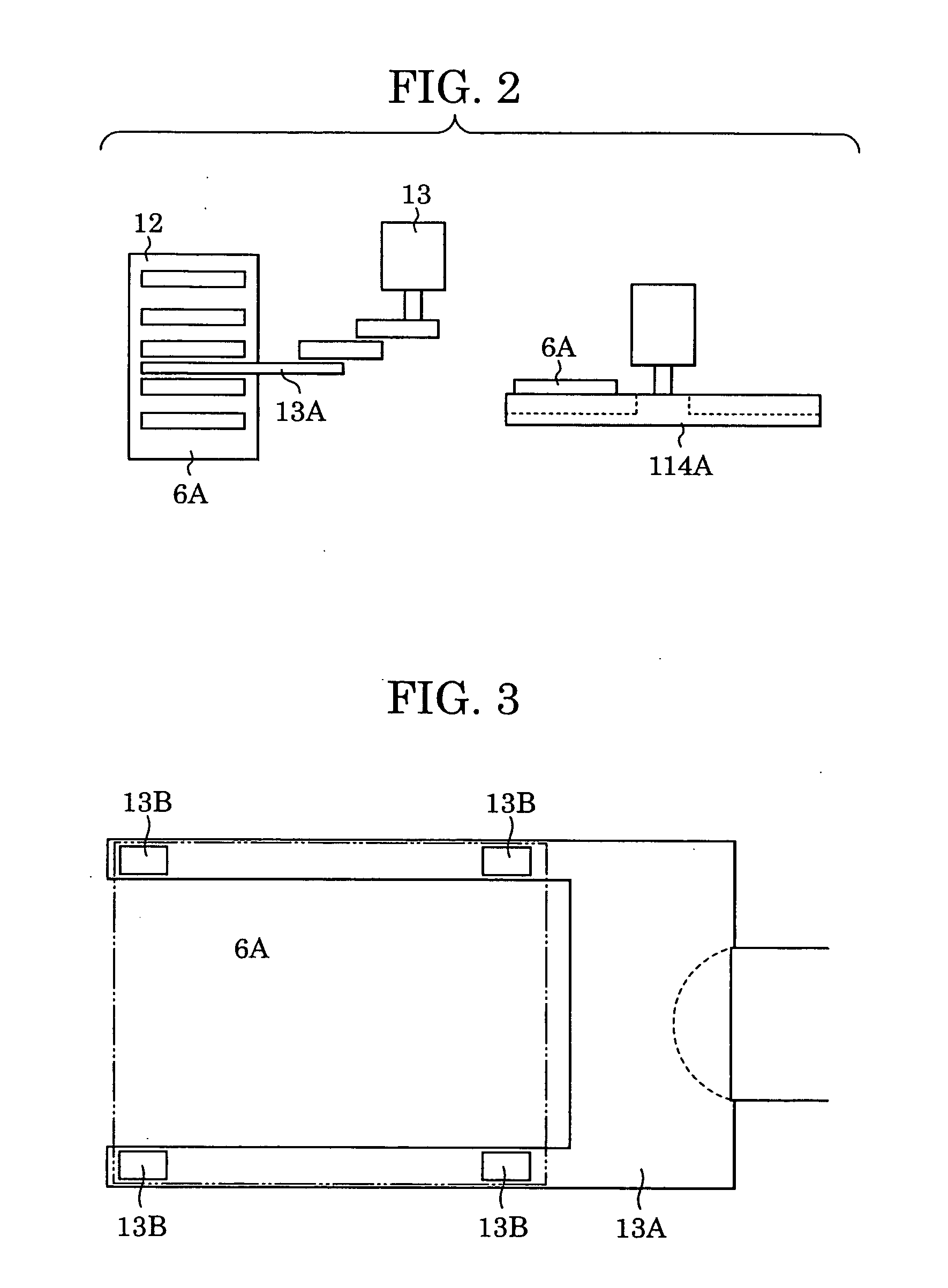Conveying method, conveyance apparatus, exposure apparatus, and device manufacturing method
- Summary
- Abstract
- Description
- Claims
- Application Information
AI Technical Summary
Benefits of technology
Problems solved by technology
Method used
Image
Examples
first embodiment
[0026]FIG. 1 is a schematic view of an exposure system having a reticle conveying hand under vacuum according to a first embodiment of the present invention. Referring to FIG. 1, a pumping laser 1 irradiates with laser a luminescent point of a light source where a light source material is evaporated, condensed, or atomized so as to make the light source material atoms radiate by plasma-exciting them. The pumping laser 1 uses a YAG (yttrium aluminum garnet) solid laser, for example.
[0027] A luminescent light source unit 2 for exposure has a structure maintained in vacuum inside, and numeral 2A denotes a luminescent point of the exposure light source (referred to as a light source below). A light source mirror 2B is arranged in a semicircular shape about the light source 2A for aligning spherical light from the light source 2A so as to condense and reflect it. To the light source 2A, a luminescent chemical element, such as liquefied Xe, atomized liquefied Xe, and Xe gas, is ejected f...
second embodiment
[0047]FIG. 6 is a schematic view of the electrostatic chuck pad 13B according to a second embodiment viewed laterally in one location. According to the second embodiment, a measuring electrode 13m is connected to the surface to be chucked via an elastic body 13e. To the measuring electrode 13m, wiring (not shown) is connected. By connecting the measuring electrode 13m to the surface to be chucked via the elastic body 13e, even if the surface to be chucked or the contact surface of the electrostatic chuck pad 13B is wavy or otherwise not flat, the measuring electrode 13m can be securely connected to the contact surface of the reticle 6A. Thus, at least one of the resistance, the dielectric constant, and the impedance of the surface to be chucked can be precisely measured.
third embodiment
[0048]FIG. 7 is a schematic view of the electrostatic chuck pad 13B according to a third embodiment viewed laterally in one location. The feature of the third embodiment is that the electrode of the electrostatic chuck pad 13B and the dielectric body 13d also serve as a measuring electrode for measuring the resistance, the dielectric constant, or the impedance of the surface to be chucked. Referring to FIG. 4B, since Cb and Rb denote the capacitance value and the resistance between the dielectric body 13d and the electrode, when measuring them in advance, Ca and Ra can be obtained by measuring the resistance, the dielectric constant, or the impedance of the entire that consists of Cb, Rb, Ca, and Ra. In the same way as in the first embodiment, in the relationship between the resistance, the dielectric constant, or the impedance of the surface to be chucked and the attraction force, the reticle peeling and the displacement of the reticle 6A due to a lateral force may be measured and ...
PUM
 Login to View More
Login to View More Abstract
Description
Claims
Application Information
 Login to View More
Login to View More - R&D Engineer
- R&D Manager
- IP Professional
- Industry Leading Data Capabilities
- Powerful AI technology
- Patent DNA Extraction
Browse by: Latest US Patents, China's latest patents, Technical Efficacy Thesaurus, Application Domain, Technology Topic, Popular Technical Reports.
© 2024 PatSnap. All rights reserved.Legal|Privacy policy|Modern Slavery Act Transparency Statement|Sitemap|About US| Contact US: help@patsnap.com










